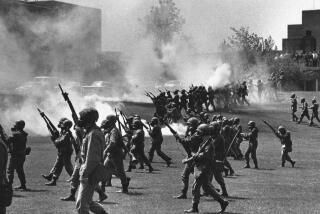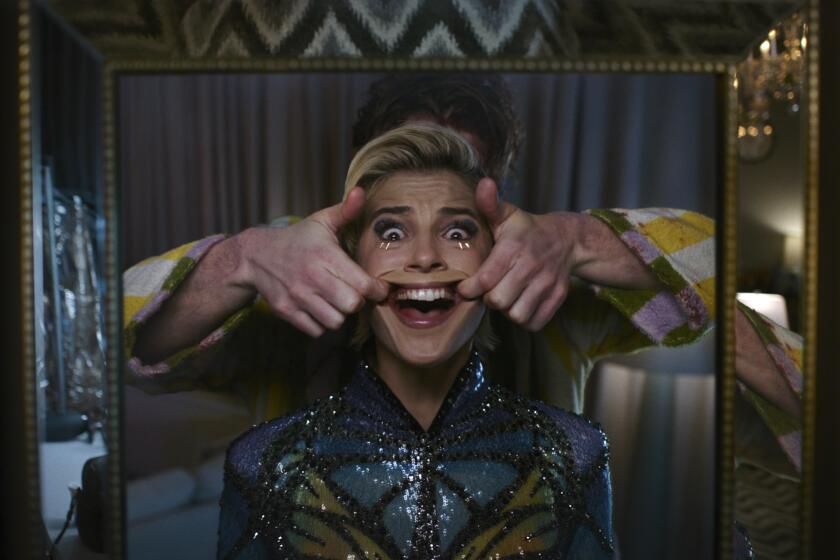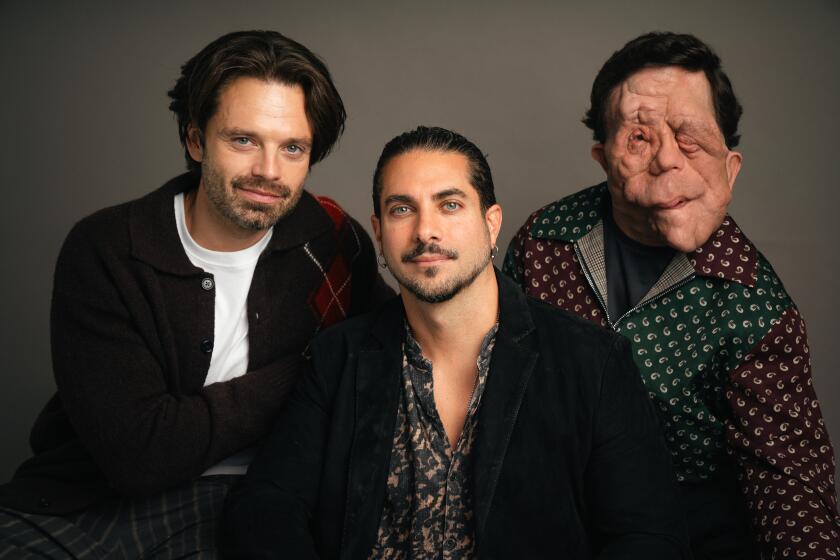How the Stonewall riots changed history
The summer of 1969, which saw the first moonwalk, Woodstock and the Manson murders, was marked by another watershed moment: a police raid on a Mafia-run Greenwich Village gay bar called the Stonewall Inn that would spark a three-day riot and, in many eyes, launch the gay rights movement. This rebellion — it’s been called the “Rosa Parks moment for gays” — and the decades of oppression that led up to it are vividly chronicled in the documentary “Stonewall Uprising.”
What began as a one-hour PBS special evolved into a feature-length film for married co-directors David Heilbroner and Kate Davis, whose previous documentary collaborations include “Pucker Up” and the recent “Waiting for Armageddon” (co-directed with Franco Sacchi). “Stonewall,” which opened this weekend at the Nuart Theatre in West Los Angeles, “grew beyond the story of the riots,” Heilbroner said by phone from Manhattan. “Very quickly we realized if you’re going to understand the Stonewall riots you have to understand American homophobia in the 1950s and ‘60s.”
To that end, the couple created a structure for the movie that was roughly chronological, but also followed the emotional buildup to Stonewall.
“The film really tries to re-create that sense of immense frustration,” Heilbroner said. “We looked at the systematic oppression of gay people from all these different angles.” These “angles” include some fasten-your-seatbelts footage from several of the era’s devastatingly anti-gay PSAs and TV news reports.
Davis, who won an Emmy in 2004 for her solo direction of the HBO documentary “Jockey,” added, “With this structure, the audience would feel more viscerally why bars like the Stonewall were so critical to the gay community. They were a refuge.”
But telling this story visually had its limitations. “There is almost no photographic coverage of the riots, largely because the press didn’t cover gay issues,” Heilbroner said. “There are seven still photographs of the riot and that’s it.”
The filmmakers chose to fill in the blanks using a number of creative re-creations of the revolt and its various participants, which often meant shooting their own stills and treating them to appear 40 years old. They also staged a bar raid with actors that, according to Davis, they “filmed intentionally badly, if you will.”
The majority of the footage seen in the film, however, is not re-created but repurposed from vintage 1960s material, some of it from nighttime riots in New York and other cities. “We interweaved the re-creation and archival footage and tried to make it seamless,” Heilbroner said. “The goal was that you would, hopefully, watch the film and you wouldn’t feel the transitions.” (Although Stonewall was undoubtedly a landmark, other histories and documentaries have pointed to earlier gay rights drives, including key protests in Philadelphia and Los Angeles.)
Fortunately, a number of original participants and observers were still around to discuss those June nights on Manhattan’s Christopher Street. The film’s eclectic array of interviewees includes members of the lesbian-gay-bisexual-transgender community as well as ex- New York City Mayor Ed Koch, former Village Voice writers Lucian Truscott IV and Howard Smith, and Seymour Pine, the once- NYPD Deputy Inspector who led the Stonewall raid.
“He was the biggest surprise of all in a way,” said Heilbroner of the now 90-year-old Pine. “He’s supposed to be the ‘villain’ of the piece, yet, when we interviewed him, he had such heart and such perspective on what went on that, I think, he transcends that role tremendously.”
Also interviewed is John O’Brien, a longtime political activist and one of the founders of the pioneering Gay Liberation Front, who was a block away from the Stonewall Inn when the melee broke out. Recalled O’Brien, “Most people were, of course, running away from the event and I, of course, started running toward it. I had no idea that I was making history.”
O’Brien, a Manhattan native who has lived in Los Angeles since 1976, feels it’s most important to consider the context of the Stonewall rebellion, which came on the heels of the closing of another popular gay Village club, the Checkerboard, as well as the waterfront slaying of two gay men by an off-duty New York Transit cop. “In those days, you could get away with doing anything to gay people,” O’Brien said. “Nobody cared about filing charges or bringing up people for any kind of violence [against gays]. It was perfectly OK.” He added, “I was proud to see gay people in 1969 finally standing up and physically fighting against the police.”
For O’Brien, the legacy of Stonewall is that “it created a much more militant movement of people demanding their rights, not begging for rights and not accepting less than full human equality. And it was international in its impact.”
As for “Stonewall Uprising,” O’Brien offered, “I’m really happy they did something that’s much more accurate of that time than previous reports about Stonewall. It removed some of the myths and brought some of the reality into focus.”
Co-director Davis hopes the documentary will “help elevate the story of Stonewall, integrating the gay revolution and placing it firmly alongside other social movements.”
Added Heilbroner, “The film reminds us how the possibility for making change is really at people’s fingertips — more than they might know.”
More to Read
Only good movies
Get the Indie Focus newsletter, Mark Olsen's weekly guide to the world of cinema.
You may occasionally receive promotional content from the Los Angeles Times.










